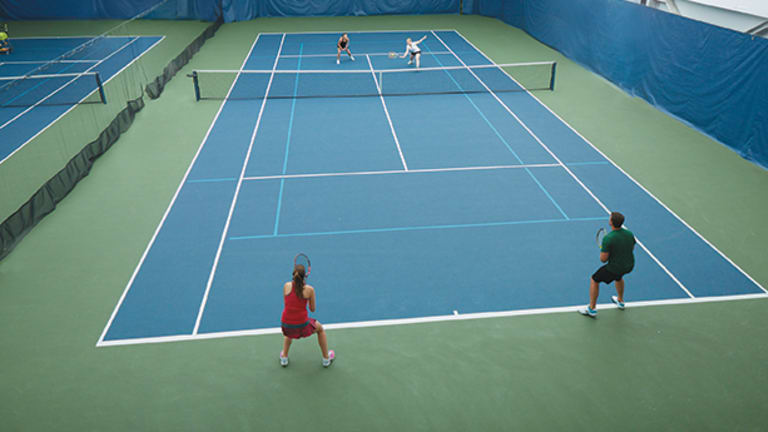The two-up formation works best at the higher levels, but here are three scenarios where the exact opposite—two back—might be your team’s best strategy:
1) When your opponents have won the race to the net and taken control of the point.
2) If your opponents are excellent serve-and-volleyers—the returner’s net partner can drop back to the baseline for the first serve.
3) If you and your partner have extremely strong groundstrokes and weak net games.
Though this formation is purely defensive, it can help you stay in a point, and even turn around a point you were destined to lose.
A
Your chief goal when playing in this formation is to hit the ball low and between your two opponents at the net. Topspin drives that dip down low will cause your opponents to pop up their volleys. If you have a strong slice, use it. It’s difficult to volley a slice with a lot of depth or pace. You also need to be ready to move forward in an instant. When you’re hitting groundstrokes to two people at the net, you may have to do a lot of running.

